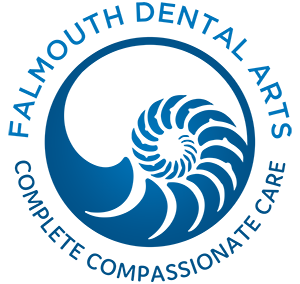Beware of Valentine’s Day!
Valentine’s Day is right around the corner, and you may be getting ready for some big fat kisses to come your way.
So even though at Falmouth Dental Arts, we’re concerned about cavities, gum disease, bad breath and lots of saliva, we won’t use this month’s blog entry to gross you out about kissing. But we will tell you some interesting facts that you can tell your kissing partner right after they smack one on you!!
Anthropologists have argued for years about the origin of kissing. Many now believe that it has evolved from the time when mothers chewed food for their babies and then went mouth to mouth at feeding time. (Well, okay – we might gross you out a little bit!) This action became so comforting to babies that the habit continued even after they could chew for themselves, and then developed into a sign of affection.
Nowadays kisses aren’t just about romantic love. Of course parents kiss their children. Worshippers often kiss religious artifacts. Some people kiss the ground when exiting an airplane. And who doesn’t want to have a “boo boo” kissed when they get a bruise?
But February 14th is a day for the romantic kind of kiss, and if you are craving one, there may be a scientific reason. While this action can promote a psychological response of warmth and affection, it also causes your brain to secrete some important and productive chemicals, such as:
- Oxytocin, which helps people develop feelings of attachment, devotion and affection for one another
- Dopamine, which plays a role in the brain’s processing of emotions, pleasure and pain
- Serotonin, which affects a person’s mood and feelings
- Adrenaline, which increases heart rate and plays a role in your body’s fight-or-flight response
But along with that, when you kiss, hundreds or even millions of bacterial colonies are transported from one mouth to the other. And let’s face it – no one wants to kiss a person who has poor oral hygiene, bad breath, or just a generally yucky mouth. So let’s start with the basics:
- Make sure you brush at least twice a day with a soft toothbrush and fluoridated toothpaste.
- Floss once per day – if you have trouble flossing or are not sure how, please ask! We’ll be glad to show you the ropes.
- Avoid sugary and acid-laden foods such as soft drinks, sports drinks, and candy. (Okay – we won’t tell anyone if you have a tiny bit of candy on Valentine’s Day!)
- Eat a well balanced diet including lean proteins, healthy fats, fruits and vegetables, nuts and fiber.
- If you need to slip in a piece of gum or breath mint, make sure it contains Xylitol, which as been proven to reduce tooth decay.
- Drink plenty of water! This helps to rinse away food particles, and staying hydrated is good for fresh clean breath.
- See your dentist on a regular basis and call immediately if you suspect there are any problems with your oral condition.
Here at Falmouth Dental Arts, we want you to have a kissable February 14th and a lifetime of excellent dental health. If you have any questions or need to set up an appointment, please give us a call at 207-781-5900. We are here for you!
